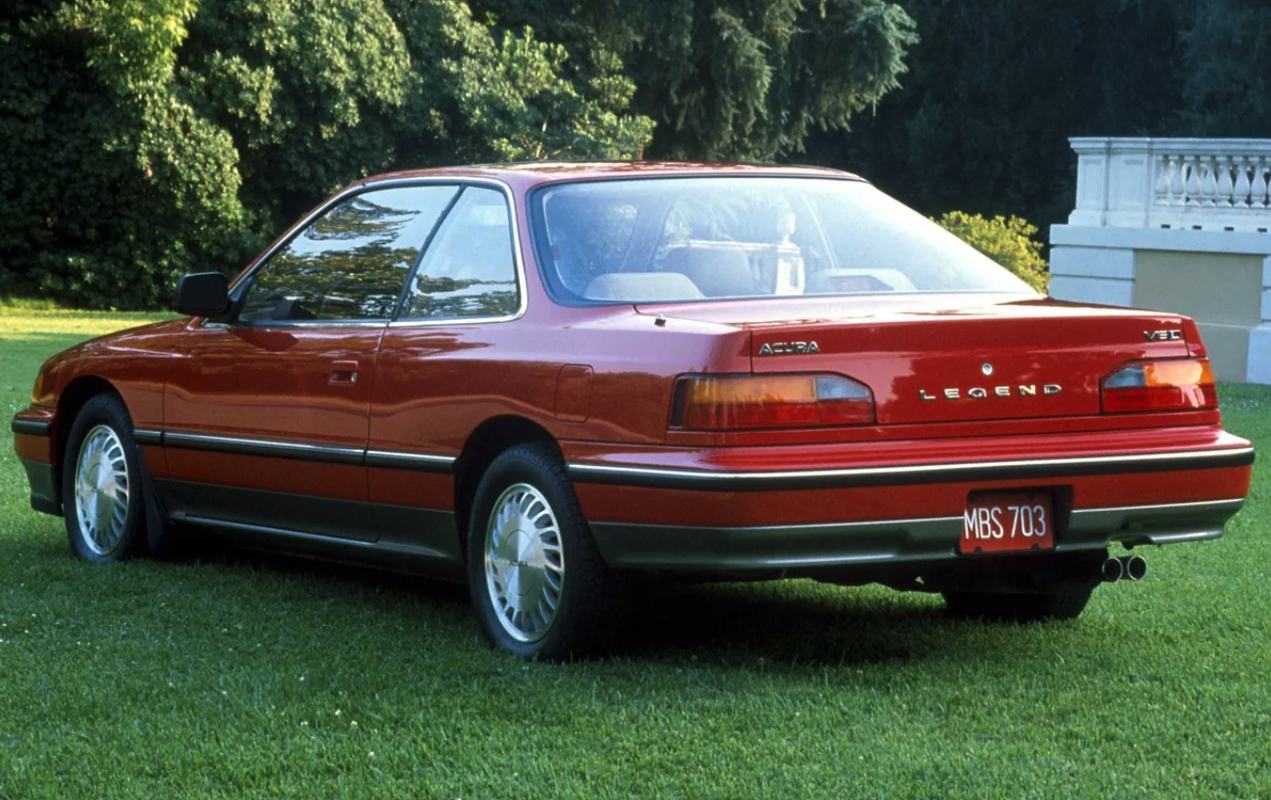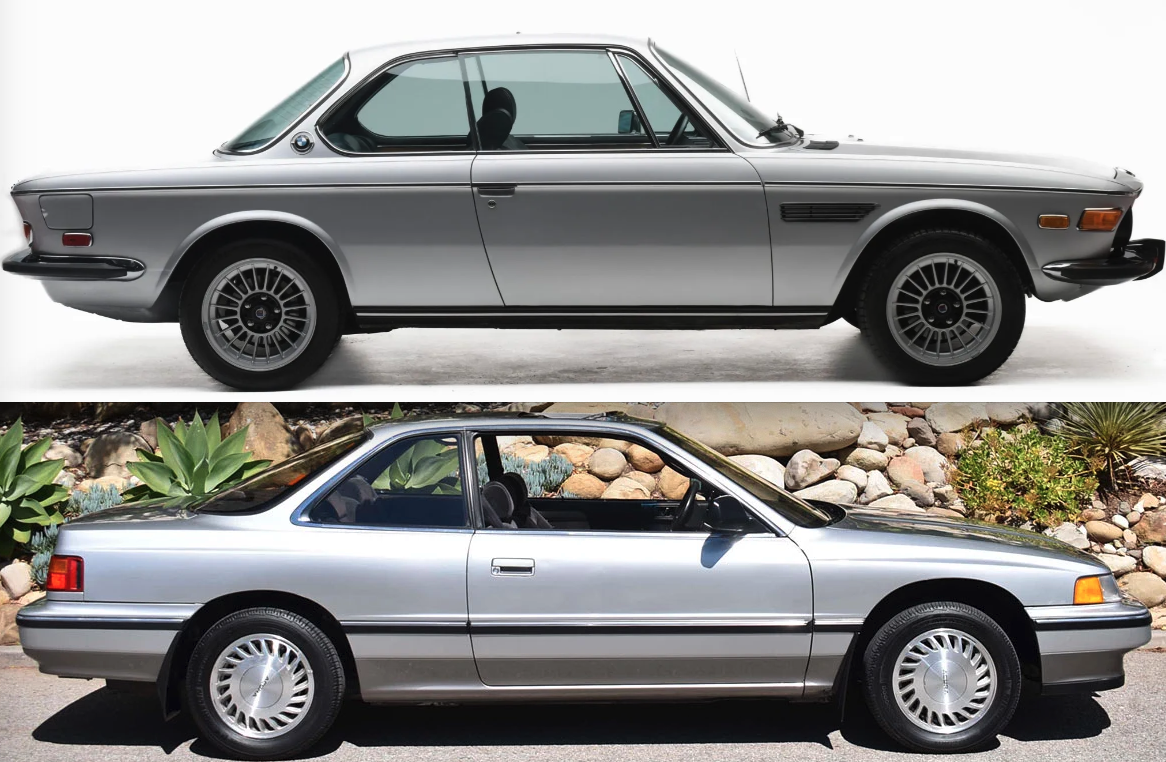In the 1980s, the idea of a Japanese Luxury Sedan was a radical concept. Most North American perceptions around Japanese cars were still very much attached to frugality, economy, and base-model offerings. There were exceptions, of course, as higher trim Japanese cars began sporting comfort features, but most of those exceptions were framed around performance rather than luxury. As sales of Japanese cars grew in North America, Japanese manufacturers needed to expand their market share. They had to offer loyal buyers of their lower-priced offerings an aspirational car, and new buyers a competitive offering against the likes of Mercedes-Benz and BMW. Even U.S. automakers could see that European brands were making significant inroads in North America attracting former American luxury car buyers to a new blend combining luxury with performance.
In 1986, Honda launched the all-new Acura brand featuring the Legend model four-door sedan and coupe. Ahead of both Lexus and Infiniti, the Acura line-up was not only luxury oriented, the cars were much larger and more fully optioned than the high-level Accord, they also came with new performance metrics. Offered with impressive standard features, the Legend was powered by an all new V6 engine, featuring fuel-injected, multi-valve performance delivered sporting qualities via four-wheel, double wishbone (front) and strut-based (rear) independent suspension, and a big surprise for motoring enthusiasts, a 5-speed manual transmission.
Luxury amenities included programmable stereo, standard power moonroof, and standard driver’s side airbag. Leather interior and other comfort features were offered as options but even in the base model form, the Legend Coupe was a beautifully executed car, capturing the market at just the right time. Contemporary press immediately pronounced the Legend Coupe as a design triumph, both visually and technically. Sales followed with rapid brand growth spawning a massive following that would include premium sports cars like the NSX, Integra R, and, eventually, a range of top-selling SUVs. First generation Legend Coupes were produced from 1986-1991 but today remain highly sought after both for their unique and elegant design and their exceptional performance balance.
Having owned two Legend Coupes personally and enjoyed the many merits of these wonderful cars, the design has always struck me as a unique combination of emergent Japanese automotive design derived from European influences. The most striking example of this is evident when compared to the BMW 3.0 CS (E9) coupe.
Designed by Wilhelm Hofmeister (he of the “Hofmeister Kink” attributed to the upward trailing rear quarter glass corner on BMW designs), the 3.0 was a landmark design both for BMW and for anyone seeking a luxury performance car. The 3.0 design was quite a bit ahead of the times, as it was first penned in the 1960s but continued production into the mid-1970s. Acura designers were highly influenced by this package, layout, and most importantly the expansive glass used in the brilliant upper portion of the design.
Acura was not the only company referencing this landmark design. Ford was very engaged in studies that emulated the BMW 3.0 CS coupe as part of their refinements to the Thunderbird design, in an attempt to make it more “European”, a feature finally realized in the 1989 Thunderbird Supercoupe while under the direction of Jack Telnack, Global VP of Design. The Thunderbird goes so far as to even use the Hoffmeister Kink. And while the Thunderbird carried similar themes as the Legend Coupe did, the scale of the American interpretation was still consistent with Detroit’s preference for beefier proportions.
The Legend Coupe captures the essence of the light upper canopy of the BMW design but introduces modern glass with a steeper windshield and dramatic rear glass angle, and yet still maintains trim pillar construction, a feature impossible to replicate today due to mandated safety requirements for thicker pillar designs. The panoramic glass is both fluid and visually structural, blending into the roofline but also carrying down into the body architecture with elegant drapery and a delightful touch of perimeter chrome, accenting the side glass. Although the traditional fender line and body side contours are not consistent with the BMW production coupe, here too Acura borrows heavily from the BMW 3.0 CS racing variant with their own interpretation of “box flares” in their fender design. In the Legend Coupe side view, the wheel openings almost identically mimic the graceful BMW lines. Even the cast alloy wheels of the Acura feature a modern interpretation of the classic BMW wheel.
Although the front and rear of the Legend Coupe have distinctly modern features, the general character is very much in keeping with the proportions and termination of the BMW front and rear overhangs. However, in the Acura, these themes are swept visually up and into the roofline giving the car a more tightly tailored presence. The V shaped hood on the BMW is discarded on the Acura Coupe, in part because of the bumper requirements but also delivering a clean and clear linear statement repeated in the rear of the car. The tall rear deck delivers better aerodynamics, it offers a surprisingly capacious trunk without compromising the overall balance of the design.

Rarely does a modern design become instantly classic and yet this is certainly the case with the aptly named Legend Coupe. Even before establishing itself as a groundbreaking design under a risky and totally new brand, the Legend was already becoming the legend it is today. Beautifully sculpted, draped in elegant body lines, and formidably positioned to build what would become one of the finest automotive brands in the century. The Acura Legend Coupe remains today one of the most balanced, perfectly targeted designs, and a landmark moment in the growth of the Japanese automotive industry.













